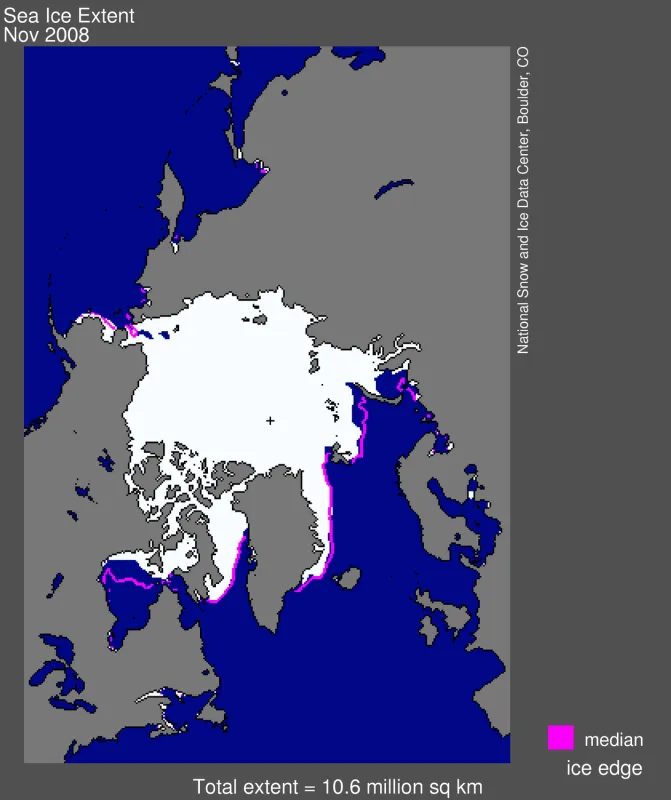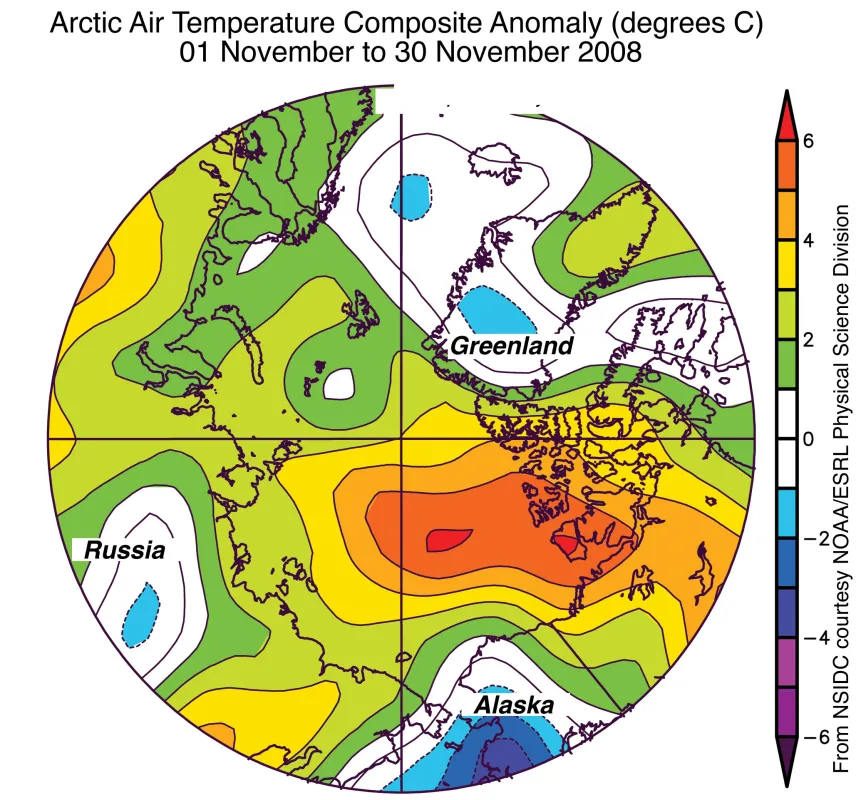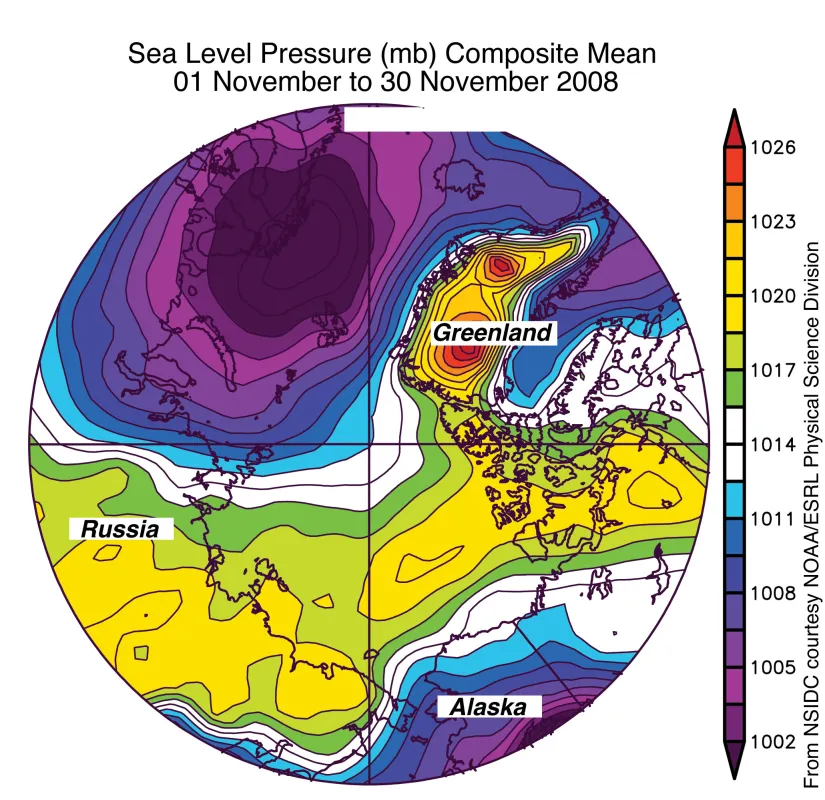Overview of conditions
Average Arctic sea ice extent for the month of November was 10.63 million square kilometers (4.10 million square miles).
Ice extent for the month of November was 580,000 square kilometers (220,000 square miles) greater than November 2007 but 680,000 square kilometers (260,000 square miles) less than the 1979 to 2000 November average.
Conditions in context
The period of very rapid increase in ice extent that characterized October and early November has ended. The rise in ice extent through the remainder of November and early December has been much slower. The daily rate of ice growth has slowed simply because there is less physical room for ice to grow: the area of open water shrinks as ice fills it.
Unusually high air temperatures continue
Our November 10 post noted unusually high air temperatures over the Arctic Ocean, especially in the Beaufort Sea, from the minimum on September 14 through October 31. This high air temperature was because of heat transfer from the ocean to the atmosphere coming both from open water areas and from the release of latent heat associated with ice growth.
Air temperatures over the Arctic Ocean stayed warm through November, partly because of continued ocean-to-atmosphere heat transfer. However, some of the warmest anomalies were located well north of the open water areas seen in September. This regional pattern of warming points to the strong role of atmospheric circulation, pumping warm air into the region from the south.
Warm air from the south
Pressure differences between high- and low-pressure cells, in conjunction with the Coriolis force, result in winds that blow parallel to the pressure contours (Buys Ballot’s Law). In November, winds between the high-pressure cell north of Alaska and the unusually low-pressure cell on the Atlantic side of the Arctic Ocean have brought warmer-than-average air into the region. This is consistent with the pattern of temperature anomalies shown in Figure 3.



